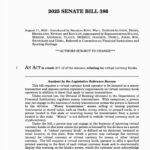“`html
Quantum Threat to Bitcoin: Harvest Now, Decrypt Later
Quantum computers might quietly undermine Bitcoin’s security, and David Carvalho, a former hacker, suggests that the countdown has already started. Carvalho, once a teenage spam hacker and now the CEO of cybersecurity firm Naoris Protocol, warns that the blockchain’s cryptographic defenses may not endure the impending wave of breakthroughs in quantum computing and AI. Central to his warning is a strategy called “harvest now, decrypt later,” where attackers accumulate encrypted Bitcoin transactions today, biding their time for future machines capable of cracking the private keys.
Carvalho’s background reinforces his warnings. He began his hacking journey at the age of 13, eventually advising NATO and Fortune 500 companies before establishing Naoris Protocol. He now emphasizes that Bitcoin’s vulnerabilities to quantum computing are very real; its SHA-256 and Elliptic Curve Digital Signature Algorithm (ECDSA) could face a quiet collapse if the industry delays necessary upgrades.
Did you know? Google’s Willow quantum chip has showcased a remarkable speed benchmark, solving challenges in minutes that would typically take the fastest classical supercomputers around 10²⁵ years.
Bitcoin’s security is built on two cryptographic foundations: SHA-256, which safeguards the mining process and transaction integrity, and ECDSA, which secures private keys through signatures regarded as unbreakable by today’s technology. While brute-forcing either system under classical computation would take longer than the lifespan of the universe, quantum advancements could significantly alter the scenario. Algorithms like Shor’s may eventually enable a powerful quantum computer to derive a private key from a public key in just minutes, allowing it to seize funds from any exposed address even before a transaction is finalized.
Security professionals emphasize that just because cryptocurrency security exists doesn’t imply it is “safe until Q-Day.” State actors and cybercriminal organizations are already collecting data for the “harvest now, decrypt later” threat, quietly amassing archives they hope to decrypt when technology catches up. The integration of AI within crypto and quantum technology may potentially accelerate this timeline. Carvalho asserts that AI could help pinpoint vulnerabilities in blockchain cryptography, while quantum hardware provides the necessary power to exploit these weaknesses. This combination — “how AI and quantum could break Bitcoin,” as he describes it — may hasten the day when current cryptographic methods can no longer be trusted.
The extent of this vulnerability is already quantifiable. Approximately 25%-30% of all Bitcoin — between 6 million and 7 million Bitcoin (BTC) — is stored in legacy address types like pay-to-public-key (P2PK) or reused P2PK hashes. These formats expose public keys, rendering them vulnerable the moment quantum attacks become viable. These dormant and reused coins represent a substantial portion of circulating BTC, which consequently affects Bitcoin’s price stability and overall adoption confidence.
Meanwhile, organizations like the National Institute of Standards and Technology and the National Security Agency are urging a shift to post-quantum cryptography in cryptocurrency, with migration targets anticipated between 2030 and 2035 to safeguard critical systems. If Bitcoin falls behind in upgrades, it may serve as a global example of Bitcoin versus quantum — a confrontation between the premier digital asset and a revolutionary class of computing that transforms digital asset protection and cryptocurrency security.
Carvalho warns that the window for transition is already closing. Without a decisive update to Bitcoin’s cryptography and investment in quantum-resistant blockchain security, he fears the industry might find out too late that the risk of quantum disruption isn’t some distant “someday.”
Did you know? Hardware studies indicate that breaking a Bitcoin wallet’s ECDSA key within one hour would, at best, require about 13 million logical qubits (or over 300 million physical qubits, depending on error correction methods).
David Carvalho cautions against what he terms a “silent collapse of Bitcoin systems,” an emerging type of AI-driven quantum attacks capable of breaking signatures, transferring funds, and evading detection entirely. Unlike a high-profile exploit, these attacks would gradually erode trust in the blockchain itself, altering balances and consensus without leaving evident forensic evidence. In this scenario, traditional security measures would likely become ineffective. Penetration tests, anomaly-detection applications, and even monitoring nodes might overlook the breach. AI could autonomously search for weaknesses in blockchain cryptography, model network behavior, and adjust its strategies in real time, all while quantum machines quietly process private keys in the background. Carvalho’s warning is stark: there won’t be a live broadcast of a cracking algorithm in action. Instead, the integrity would deteriorate unnoticed — missing transactions here, a governance vote silently undermined there, funds mysteriously redirected — until Bitcoin’s adoption experiences a crisis of confidence.
Developers are taking the quantum threat to Bitcoin seriously, and several defensive measures are currently underway. However, these efforts illustrate how challenging genuine protection will be. BIP-360 (Pay-to-Quantum-Resistant-Hash, or P2QRH) introduces quantum-resistant signature schemes and hybrid address formats, facilitating gradual migration to post-quantum cryptography in crypto systems while adding new protections without abruptly discarding the old ones.
Post-quantum infrastructure firms like Naoris Protocol are developing decentralized networks aimed at integrating quantum-resistant blockchain security directly into transaction layers, combining real-time threat detection with cryptography that does not rely on vulnerable elliptic curves. Quantum-safe technologies such as STARK-based zero-knowledge rollups are gaining traction for their hash-based proof systems, which avoid many of the vulnerabilities quantum computers are expected to target.
However, even the most advanced solutions face a reality check: Bitcoin’s strength lies in its decentralization, which complicates the implementation of widespread upgrades. A Bitcoin cryptography update (especially one as fundamental as changing its core signature scheme) necessitates broad consensus among miners, node operators, wallet providers, and users. Even after reaching agreement, the transition itself is likely to be slow and complicated. Millions of users will have to migrate coins from legacy addresses to quantum-resistant ones. If adoption stagnates, older coins will continue to be vulnerable, undermining the primary objective of cryptocurrency security during the quantum era.
Did you know? The Naoris Sub-Zero Layer can integrate into Ethereum Virtual Machine-compatible blockchains within 48 hours, offering post-quantum protections without causing hard forks or disrupting existing contracts.
Michael Saylor, executive chairman of Strategy, has downplayed the Bitcoin vs. quantum narrative as overblown. During an appearance on CNBC, he referred to it as a “quantum marketing gimmick,” highlighting that companies like Google or Microsoft would not release machines capable of breaking their own encryption and asserting that, if necessary, “Bitcoin can just be upgraded.”
General expert sentiment is more cautious, albeit still measured. Numerous cryptographers assess the risk timeline for Bitcoin’s vulnerability to quantum computing as extending a decade or more, with the most conservative projections suggesting the 2040s. Optimists believe the tipping point might not arise until well after 2035; pessimists caution it could emerge within the next five to ten years. While panic is unproductive, complacency may pose a greater danger. Most experts in cryptocurrency security agree that preparing now for the potential of quantum computing to compromise Bitcoin wallets is significantly safer than scrambling afterward. If Bitcoin’s defenders can coordinate on digital asset protection today, the transition to post-quantum cryptography in cryptocurrency may proceed like a controlled upgrade. Delay too long, and it might resemble the “silent collapse” that Carvalho fears.
“`


















